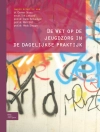This book presents an historical and sociological account of the Italian mafia-type organisation known as the ‘ndrangheta. It draws together diverse perspectives on the various ‘ndrangheta clans and their behavioural models, focusing specifically on their organisational skills, their bonds with Calabrian society and Calabrian communities around the world, their mobility, and their characterisation as poly-crime organisations.
The authors demonstrate that ‘ndrangheta clans have an innovative way of being and doing mafia work through a dense network of relationships both in the ‘upperworld’ and in the ‘underworld’, a particularly acute sense of business, a reputation built on the protection of blood and family ties, and, last but not least, a symbiotic relationship and camouflage within Calabrian society. By focusing on both the structures and the activities of the clans and with findings based on judicial documents, this book explores why the ‘ndrangheta is today labeled as “the most powerful Italian mafia”. It will be of great interest to upper-level students and scholars of organised crime and sociology.
Cuprins
Introduction.- Part I. Structures and Governance.- Chapter 1. Calabria and the ‘Ndrangheta.- Chapter 2. ‘Ndrangheta Movements in the Centre-North of Italy.- Chapter 3. ‘Ndrangheta Movements Around the World.- Part II. Illegal Activities.- Chapter 4. Drug Trafficking and Investments.- Chapter 5. Poly-crime ‘Ndrangheta.- Conclusion.
Despre autor
Anna Sergi is Lecturer in Criminology at the University of Essex, UK. Her research interests and publications include mafia, organised crime, comparative policing, criminal law and criminal justice systems. She is also the Chair of the British Society of Criminology Early Career Researchers Networks.
Anita Lavorgna is Lecturer in Criminology at the University of Southampton, UK. Her research interests and publications include organised crime, cybercrime, and crime prevention.











